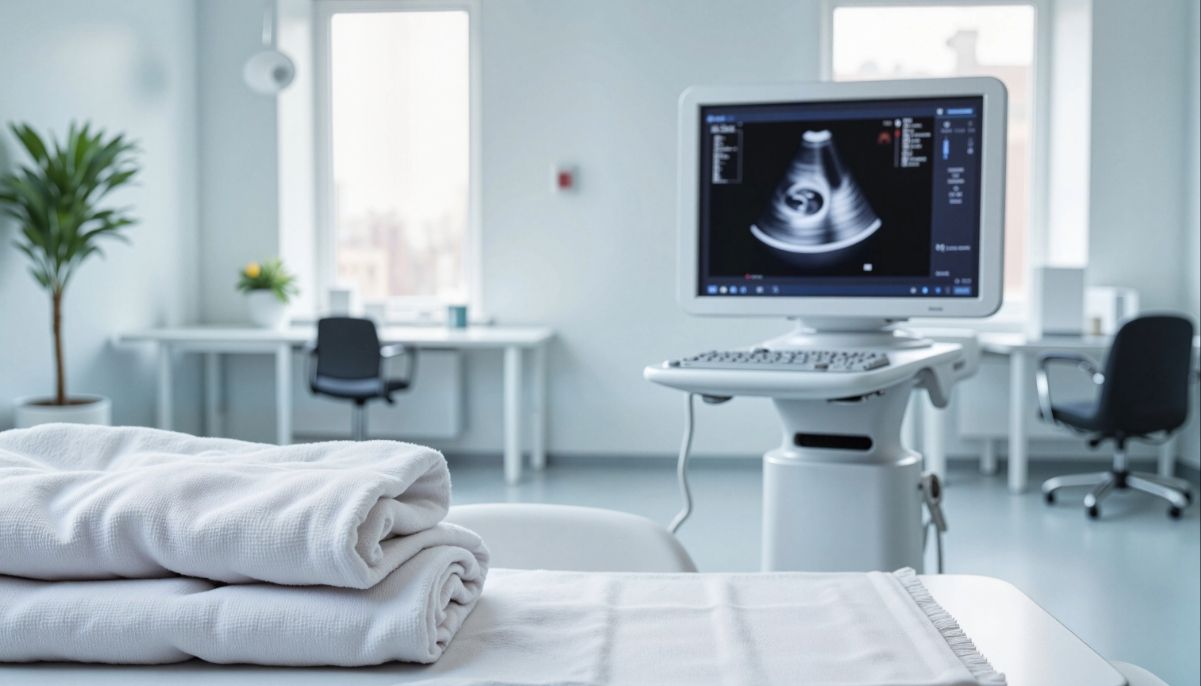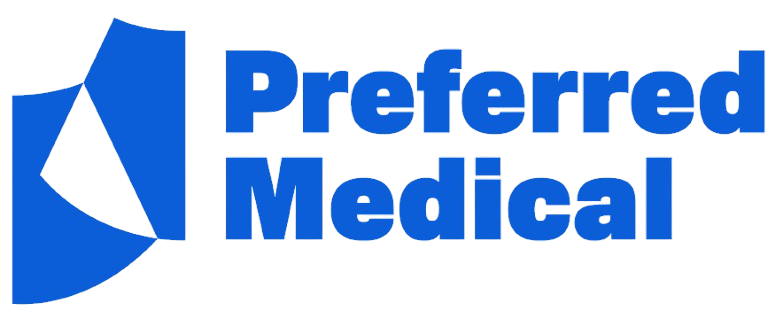Top 10 Women’s Health Ultrasound Manufacturers (Clinical Perspective)
** IN NO PARTICULAR ORDER **
1) Philips
Why it’s on the list: Philips is a mainstay in high-end OB/MFM, gynecology, and pelvic imaging, with a long reputation for smooth grayscale, Doppler sensitivity, and operator-friendly ergonomics.
Clinical strengths
- Balanced 2D/3D/4D performance with strong fetal cardiac and placental assessment capabilities.
- Ergonomic consoles and smart workflow automation that reduce scan fatigue in high-volume settings.
- Strong breast imaging adjuncts with linear probes and elastography options.
What professionals note
- Deep OB/MFM pedigree and trusted diagnostic confidence in challenging maternal habitus.
- Large national service footprint and long-term support/warranty programs.
- Reliable integration with hospital IT and multisite networks.
2) GE HealthCare
Why it’s on the list: GE is consistently among the leaders in obstetric and gynecologic imaging, with deep penetration in MFM and high-volume OB practices. Their OB toolset, fetal assessment packages, and mature 3D/4D pipeline are widely validated in daily clinical use.
Clinical strengths
- Excellent OB presets and fetal workflow packages, including automated biometry, fetal heart assessment tools, and structured reporting.
- Robust 3D/4D rendering for fetal face/extremities, uterine cavity, IUD localization, and gynecologic mass characterization.
- Broad transducer suite for endovaginal, abdominal, and high-frequency linear breast applications.
What professionals note
- Consistent image quality at both premium and mid-tier price points.
- Comprehensive DICOM, EMR/PACS integration, and mature service network.
- Wide choice of platforms (portable and cart-based) for satellite clinics and tertiary centers.
3) Siemens Healthineers
Why it’s on the list: Siemens drives innovation in beamforming and AI-supported workflows. Their systems are known for clean Doppler, elastography options, and robust 3D/4D, particularly valued in complex pelvic pathology and advanced obstetric imaging.
Clinical strengths
- High-end OB/MFM performance with excellent Doppler for fetal and uterine/ovarian vascularity.
- Advanced elastography and quantification tools for gynecologic and breast applications.
- Sophisticated automation (biometry, follicle tracking, structured OB reports).
What professionals note
- Solid transducer strategy and comfortable ergonomics for long scanning days.
- Premium-tier pricing with corresponding performance and support.
- Good fit for academic, tertiary, and research-oriented practices.
4) Canon Medical Systems
Why it’s on the list: Canon (formerly Toshiba Medical) is known for exceptional grayscale and Doppler balance, ergonomics, and reliable system durability. It’s a steady performer for OB/GYN practices that prioritize consistent image quality.
Clinical strengths
- Clean 2D and sensitive Doppler for fetal and gynecologic flow evaluation.
- Useful 3D/4D packages and measurement automation.
- Thoughtful design for sonographer comfort and workflow speed.
What professionals note
- Competitive total cost of ownership and uptime.
- Strong abdominal/EV transducers for early pregnancy and pelvic workups.
- Trusted by mixed-specialty imaging departments that need cross-modality cohesion.
5) Samsung Medison
Why it’s on the list: Samsung has quickly matured into a formidable OB/GYN player, combining attractive pricing with robust 3D/4D and a steady stream of workflow/AI updates.
Clinical strengths
- Fast, intuitive 3D/4D rendering and fetal face visualization—very popular in OB clinics.
- AI-enabled measurements and OB report automation that reduce repetitive tasks.
- Bright displays, responsive touch UX, and modern portable/cart options.
What professionals note
- Strong value positioning for private practices scaling multiple exam rooms.
- Frequent software refinements improve user experience across product life.
- Wide distribution network and improving service presence in the U.S.
6) Mindray
Why it’s on the list: Mindray has made sustained gains in women’s health by delivering premium-adjacent features at mid-market pricing, with steady advances in OB/MFM toolkits and ergonomics.
Clinical strengths
- Capable 2D/3D/4D with evolving obstetric automation (biometry, fetal heart tools).
- Good probe selection (EV, convex, linear) with practical presets that scan well out of the box.
- Rapid boot, quiet operation, and portable models suited to multi-room clinics.
What professionals note
- Strong value proposition—especially attractive for expanding OB/GYN groups.
- Five-year warranty options and training support are common with U.S. distributors.
- Increasingly refined user interface and reporting modules.
7) Alpinion
Why it’s on the list: Alpinion delivers compelling price-performance with a growing reputation in women’s health and point-of-care. It’s an appealing option for clinics seeking reliable OB/GYN imaging, portability, and straightforward workflows.
Clinical strengths
- Clear 2D imaging, responsive Doppler, and practical 3D/4D options for OB use.
- Lightweight, fast-boot systems for multi-room practices and outreach.
- Five-year warranty packages available in the U.S. via select distributors.
What professionals note
- Strong value and low complexity—easy to standardize across rooms.
- Good match for clinics that want modern tools without premium cost.
- Expanding user base, with training and applications support key to adoption.
8) Hologic (Supersonic Imagine)
Why it’s on the list: While Hologic is best known for mammography and women’s health platforms, its ownership of Supersonic Imagine (Aixplorer technology) brings advanced shear-wave elastography and high-frequency breast ultrasound to the fore—highly relevant for comprehensive women’s imaging centers.
Clinical strengths
- Industry-leading shear-wave elastography for lesion characterization.
- High-frequency imaging that complements mammography and MRI findings.
- Useful for post-biopsy surveillance, dense breast evaluation, and adjunct screening.
What professionals note
- Niche excellence in breast ultrasound rather than full-spectrum OB/GYN.
- Integrates naturally into breast centers focused on multimodality workflows.
- Specialized training is key to extract full value from elastography.
9) Fujifilm Sonosite
Why it’s on the list: Sonosite dominates point-of-care ultrasound (POCUS), an increasingly important access point for women’s health—particularly early pregnancy assessments, bedside pelvic evaluations, and ED/urgent care use in women’s health pathways.
Clinical strengths
- Rugged, reliable portable platforms designed for mobile/bedside use.
- Rapid boot and simplified workflows that suit urgent or screening contexts.
- Adequate OB/GYN presets and endocavitary transducer support for targeted exams.
What professionals note
- Not a comprehensive OB/MFM replacement, but excellent as a complementary access device.
- Strong service reliability and device longevity in demanding environments.
- Ideal for decentralized care, outreach clinics, and L&D bedside checks.
10) Esaote
Why it’s on the list: Esaote offers cost-effective systems with solid pelvic and gynecologic imaging, serving private practices and regional centers that need dependable 2D, Doppler, and practical 3D capabilities without premium pricing.
Clinical strengths
- Competent pelvic/EV imaging with sensible workflow features.
- Elastography and 3D datasets available on select platforms.
- Good balance of image quality and affordability for routine women’s health.
What professionals note
- Attractive TCO for practices seeking dependable workhorses.
- Balanced transducer portfolio for OB/GYN and general imaging overlap.
- Smaller U.S. footprint than the “Big 3,” but focused solutions and improving support.
Additional players to watch
- Butterfly Network and Clarius: handheld devices that can extend OB access in triage and community settings; not replacements for full OB/MFM consoles but strategically useful.
- QT Imaging: a specialized, radiation-free breast imaging modality (transmission ultrasound). It’s not a conventional B-mode ultrasound system, but relevant to women’s imaging ecosystems focused on adjunct screening and dense breast evaluation.
Practical selection guidance for medical professionals
Match platform tier to clinical use-case.
- MFM/tertiary OB: prioritize premium consoles (GE, Philips, Siemens) with advanced fetal echo, high-end Doppler, and robust 3D/4D volumes.
- High-volume OB/GYN clinics: mid-to-high tiers from GE, Philips, Samsung, Canon, Mindray offer excellent throughput with dependable presets and automation.
- Breast centers: consider Hologic/Supersonic for elastography and high-frequency breast ultrasound; pair with a general-purpose platform for interventional guidance and comprehensive pelvic work.
- POCUS and outreach: Sonosite (and certain portable lines from Mindray, Samsung, Alpinion) deliver speed and durability.
Probe ecosystem and ergonomics matter.
Endovaginal, convex, and high-frequency linear probes are the bread-and-butter for women’s health. Evaluate grip comfort, cable flexibility, and connector durability. For high-volume OB, check transducer cooling, cord management, and the ease of daily disinfection.
3D/4D and automation aren’t just for “babyface.”
Volume datasets improve uterine cavity assessment, fibroid mapping, IUD position, and anomaly workups. Automated biometry, follicle counting, and structured OB reporting reduce exam variability and documentation burden—important for throughput and compliance.
Image quality under real-world conditions.
Insist on side-by-side demos with your patient mix (including high BMI). Look at fetal cardiac detail, placental-lacunae visualization, adnexal mass characterization, and endometrial interface clarity. Subtle differences in beamforming and noise reduction affect diagnostic confidence.
IT, DICOM, and security.
Confirm seamless integration with your EMR/PACS, user management controls, audit logs, and encryption at rest/in transit. Check vendor cadence for cybersecurity updates and compatibility with your enterprise imaging strategy.
Service, warranty, and training.
A five-year warranty with responsive field service and applications training can be more valuable than a marginal gain in image quality. Prioritize vendors (and distributors) with proven uptime metrics, loaners, and ongoing staff education.
Budgeting and lifecycle.
Premium systems shine in MFM, but mid-tier platforms now deliver impressive OB/GYN performance at lower capital outlay. Certified pre-owned from reputable channels (with probe coverage and PM plans) can expand capability without compromising care.
Bottom Line
Even without a live 2025 web validation, these ten manufacturers remain the most credible, widely adopted choices across the women’s health continuum. Your “right” shortlist should be built around case mix (routine OB vs. MFM subspecialty), throughput targets, training depth, and the reliability of service and integration. When you narrow to 2–3 finalists, schedule on-site demos with identical patients and standardized protocols—and bring the sonographers who’ll use the systems every day. That real-world comparison will tell you more than any spec sheet.
Ready to Assist
Partner with Preferred Medical today and experience the confidence of imaging solutions backed by 35+ years of expertise, a five-year warranty, and nationwide support. Call (866) 492-1313 or visit our Contact Us page to schedule your personalized consultation. Discover the right ultrasound system for your practice—tailored to your clinical, operational, and financial goals.











